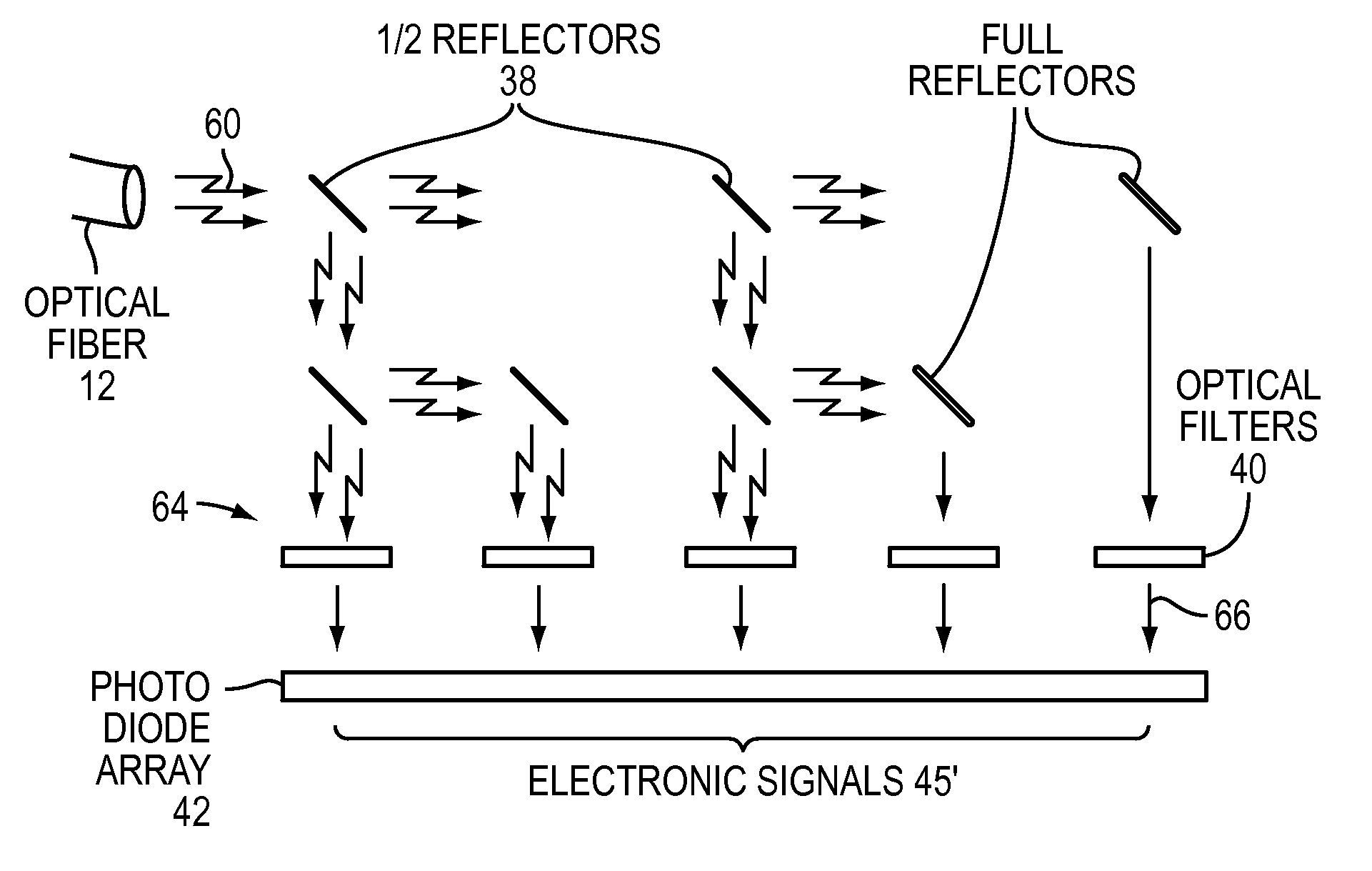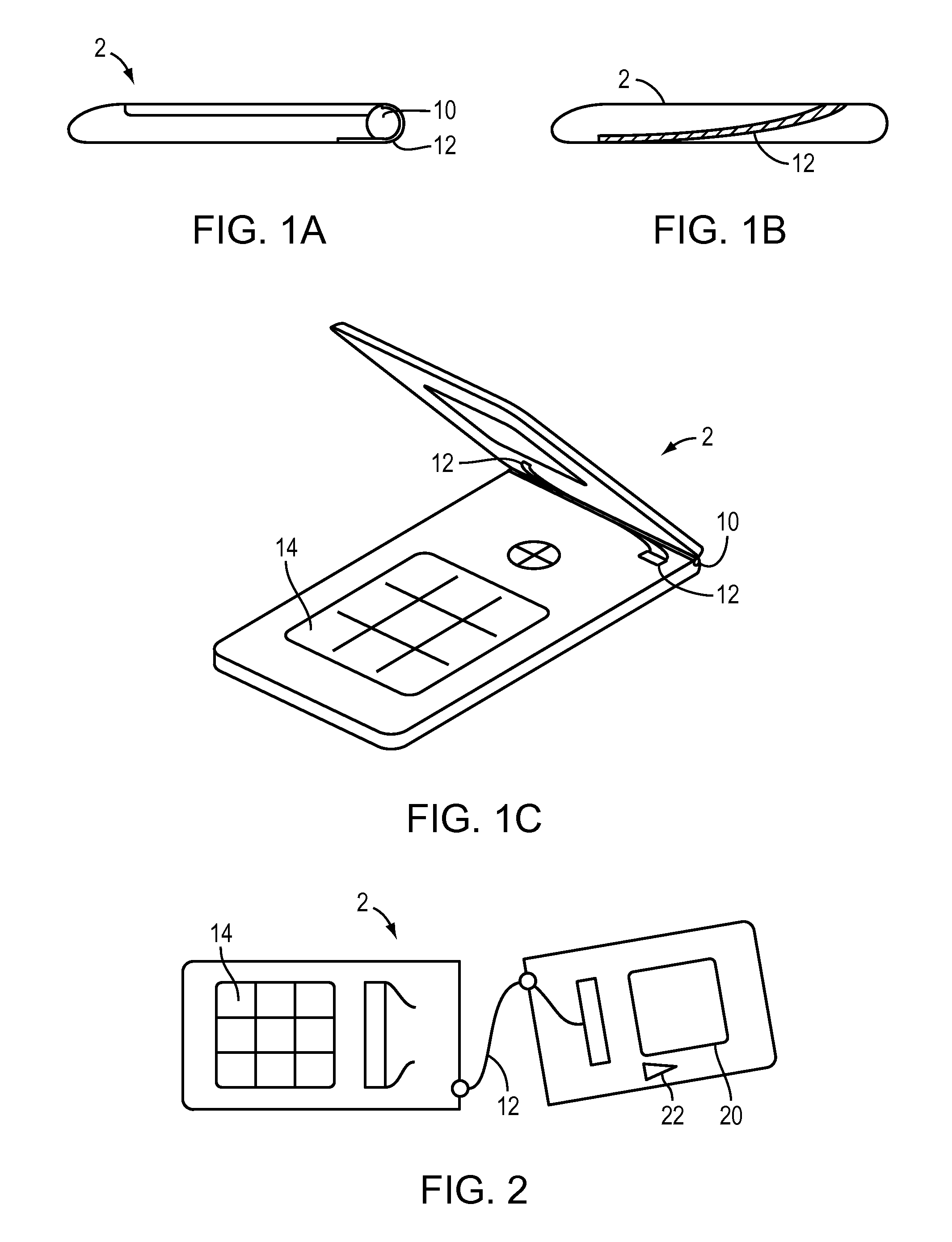Wave division multiplexing replacement of serialization
a technology of serialization and wave division, applied in the field of optical data transmission, can solve the problems of introducing timing and complex circuitry, etc., and achieves the effects of reducing electronic interference, reducing the size of data carrying cables, and increasing bandwidth capabilities
- Summary
- Abstract
- Description
- Claims
- Application Information
AI Technical Summary
Benefits of technology
Problems solved by technology
Method used
Image
Examples
Embodiment Construction
[0026]FIGS. 1A, 1B, 1C and 2 illustrate one application of the present invention. A “flip phone”2 is shown with a hinge 10. The hinge includes a thin optical cable 12 that is arranged to allow the full range of motion needed to open and close the flip phone.
[0027]The optical cable may be arranged to carry the optical signals back and forth via an electronic / optical interface 16 traversing the hinge 10 between a keyboard 14 and a display screen 20 and camera 22. In the illustrative example, the optical cable 12 extends from one side of the device to the other and complies with the opening of the device by twisting to reduce the bending radius.
[0028]In a stationary phone or a hand held electronic personal assistant, the present application may dispense with the optical cable and simply run an optical layer interface, as discussed below.
[0029]FIG. 3 illustrates electronic signals 30 driving LED's 32. The light from the LEDs are arranged cover from the visible spectrum into the infrared...
PUM
 Login to View More
Login to View More Abstract
Description
Claims
Application Information
 Login to View More
Login to View More - R&D
- Intellectual Property
- Life Sciences
- Materials
- Tech Scout
- Unparalleled Data Quality
- Higher Quality Content
- 60% Fewer Hallucinations
Browse by: Latest US Patents, China's latest patents, Technical Efficacy Thesaurus, Application Domain, Technology Topic, Popular Technical Reports.
© 2025 PatSnap. All rights reserved.Legal|Privacy policy|Modern Slavery Act Transparency Statement|Sitemap|About US| Contact US: help@patsnap.com



